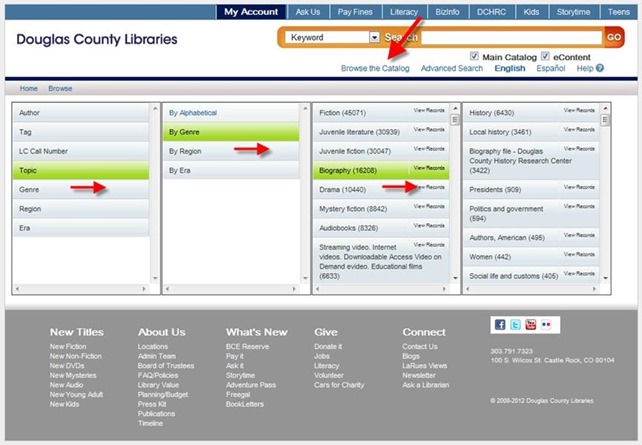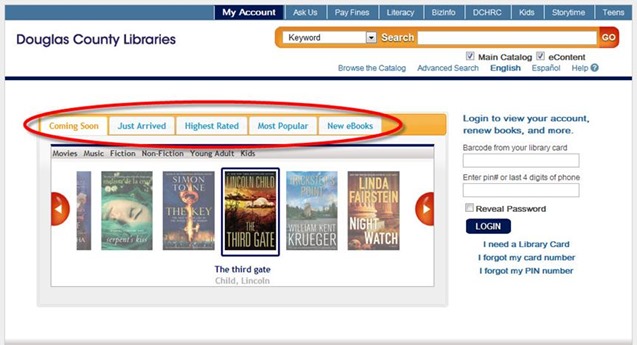In their handling of e-books, U.S. public libraries tend to be like suburb developments with a standard ranch-house or colonial look.
E sits off in a little virtual cul-de-sac, often lorded over by the OverDrive distribution service. Digital books, e-audios and videos are not all in the main catalog for patrons who would rather search every collection in one swoop. Just as vexingly, libraries must worry about losing access if their OverDrive subscriptions lapse for reasons of budget or otherwise. Not every system has the right contractual arrangements and the wherewithal to push back as the Kansas librarians did.
But what if a local library system could:
–Set up its own e-book hosting rather than simply rely on OverDrive for such services.
–Buy books at fairer prices from publishers directly and own them confidently within the bounds of fair use—one way to help avoid excessive charges and some obnoxious restrictions. Long term, the savings for a large library system could add up to millions. While I’d love to see experiments with different business models, many librarians understandably prefer ownership right now due to the vagaries of budgets and publishers.
 –Provide Adobe DRM services. I passionately hate Adobe DRM due to the nasty inconveniences it inflicts on me and other e-book-lovers. But for now, given the ubiquity of Abode technology in the e-reader world, libraries can’t avoid it.
–Provide Adobe DRM services. I passionately hate Adobe DRM due to the nasty inconveniences it inflicts on me and other e-book-lovers. But for now, given the ubiquity of Abode technology in the e-reader world, libraries can’t avoid it.
–Not only blend digital titles into the main catalog but also offer searching tools much, much more powerful than OverDrive does, aided by the open source VuFind software for libraries. You could mix a topic search, for example, with a geographical one. And, yes, the search would include OverDrive books, even before the company released its APIs—as well as titles from other digital vendors.
–Let you stroll into the library and use the same catalog by way of big screens on the wall–a ‘power wall,’ so to speak.
–Enable you to read the system’s self-hosted books online (second image) so you weren’t up against Adobe’s five-device limit and could enjoy amenities such as the system’s ability to remember your last place in a book.
In well-to-do Douglas County in Colorado, all this is exactly what the much-respected local library system, the state’s third biggest in circulation, is doing already—and inspiring some California libraries to follow up with their own do-it-yourself hosting of e-books. Ten percent of the Douglas acquisitions budget is now going for electronic content, not outlandish for a county with upscale demographics even if the percentage grows. Douglas has even worked with a leading library lawyer, Mary Minow, to nail down what it takes for libraries to own books for real. Mind you, Douglas’s break with OverDrive and 3M and the rest isn’t complete—just 7,000 or so of the e-titles in the Douglas county collection reside on the library system’s own servers. This is merely a beginning in certain ways, not a 100 percent complete and fully polished solution yet. But in terms of technology alone, I would guess it’s at least 80 percent there, and I’d strongly encourage other public library systems to work with Douglas on their own experimentation, as well as with the Digital Public Library of America.
Simply in the interest of completeness, here are some of the shortcomings that I expect Douglas to overcome:
While you can download ePub files and read them in full glory with OverDrive’s e-reader client or alternatives like the Bluefire Reader, the Douglas system’s online reader itself doesn’t offer the same level of experience. On my iPad, I could blow up the type to only a certain size—still too small for many people. And I could not enjoy all-text bold. In slickness, Douglas County’s HTML5-based online system lags behind the cloud readers offered by Amazon or Book.ish, the Australian company that OverDrive has just acquired (I have not tried 3M‘s yet). Just the same, library officials assure me that an improved look is on the way, and I would be extremely optimistic, based on history, such as the progression of Ubuntu linux from a technie-oriented operating system to one that even 91-year-old grandmas can enjoy with a little help. Douglas County in the future will even offer caching for the online reader, a technical wrinkle that in this case will let you read e-books offline until they expire. Still better, an iPad e-reading app is awaiting approval from Apple and, for all I know, could be as polished as OverDrive’s equivalent.

 Ultimately, I can see a number of possibilities that the Douglas County experiment and related ones are opening up for the library world. The more America’s public libraries can do on their own, the more bargaining power they will enjoy will companies like OverDrive—paving the way, I’d hope, for the eventual purchase of OverDrive as a shortcut to a well-stocked national digital library system. OverDrive has been spent years dealing with publishers and hosts ‘more than 650,000 premium digital titles,’ including its share of books from the majors.
Ultimately, I can see a number of possibilities that the Douglas County experiment and related ones are opening up for the library world. The more America’s public libraries can do on their own, the more bargaining power they will enjoy will companies like OverDrive—paving the way, I’d hope, for the eventual purchase of OverDrive as a shortcut to a well-stocked national digital library system. OverDrive has been spent years dealing with publishers and hosts ‘more than 650,000 premium digital titles,’ including its share of books from the majors.
In their own writings and via emails to me, Library Director Jamie LaRue and Monique Sendze, associate director of IT, have passed on details about partly weaning their system off the usual suspects and increasing their own bargaining power. ‘As of the end of the month,’ Jamie told me June 14, ‘we’d spent about $90k on a Vufind programmer, $10k on the Adobe Content server. $1,500 a year maintenance on the ACS, 8 cents per transactions. And configuring VuFind for another library, and hosting them on our server, cost them $6,000.’ As he sees it, his efforts are replicable, especially since anyone can use Douglas’s VuFind customization without charge.
‘Another, and important point: we’re getting 40-45 percent discounts from most publishers. Given the size of our [materials] budget ($3.5 million), we’ll make back our original investment pretty fast, compared to the price offered by OverDrive and 3M (which charges more than consumer retail price to libraries).’ As sources of books, Douglas has signed up or at least identified ‘12 groups of publishers, comprising over 800 individual companies,’ and while it hasn’t won over key holdouts like Simon & Schuster (also resisting OverDrive), it can directly buy from such giants as Gale/Cengage Learning, as well as a bunch of small publishers including those in the Colorado Independent Publishers Association. Talk about a chance to encourage regional literature!
Discussing possible improvements, I shared with Monique my wish that the Douglas County system had an OverDrive-style area optimized for casual online browsers (rather than simply people visiting the library and trying out the power wall). I’d like more information up front so it isn’t as necessary to drill down—for example, the listing not just of ‘nonfiction’ but also of ‘biography’ and other subcategories.
‘We have accomplished that functionality by providing a browse the catalog feature for those folks who want to browse,’ she emailed back.
‘Our Analytics show that most of our catalog users begin with a keyword search—see screenshot 1. In addition, we have the widget right there in front of patrons that want to browse to get started and we can add more channels to that, but these are the ones that most of our users are using—see screenshot 2. We also have created a virtual display that we are calling the digital ‘powerwall’ to simulate the in-library browsing type experience— see screenshots 3a and b.’
I’ll reproduce her screenshots below while encouraging discussion of the interface issue and others. Who knows? In the near future, you may well see the feature I wanted. Folks, this is real. Douglas is keeping an eye on the big commercial vendors and hopes to match their offerings, aided by feedback from others. So drop by the Douglas site and share your suggestions with Jamie, Monique and colleagues. And check out a forthcoming Library Journal webcast on June 12 featuring the Douglas County experiment. Ideally more public libraries can learn from and follow the Douglas example, and, directly or through professional groups, well-off systems can share their expertise with small, cash-strapped ones. Long term, the best solution would be a national digital library system respecting local and state systems’ autonomy. It could offer pooled purchasing for public libraries and a separate component handling the same for academic libraries; and a shared infrastructure and technical services organization for all libraries and museums could encourage and build on pioneering like Douglas County’s. But for now, let’s not neglect the present and the local level.
Douglas understands and is acting. Who says all libraries need a tract look or must forever limit themselves to traditional business models?
Screenshot 1 (below): The catalog, with far more flexible searching than OverDrive’s (click on image for bigger view)
Screenshot 2 (below): All-format browsing as displayed on the home page
Screenshot 3a (below): The power wall in action

Screenshot 3b (below): Another power wall view
Similar Posts:
- Smug about OverDrive? A whopping 39 percent of U.S. public libraries don’t offer downloadable e-books. Does D.C. care? E-textbooks are no substitute, Mr. President
- OverDrive as an e-library kickstart—and related information on e-books and family literacy: Links for new visitors to LibraryCity.org
- Printed books vs. e-books: Should publishers impose borrowing limits on e-book copies even though there aren’t equivalent limits on paper copies?
- U.K.’s planned library closings show risk of NOT digitizing U.S. libraries
- Amazon – IPG battle shows need for libraries to buy OverDrive and control their own destinies
(Via LibraryCity.)
































